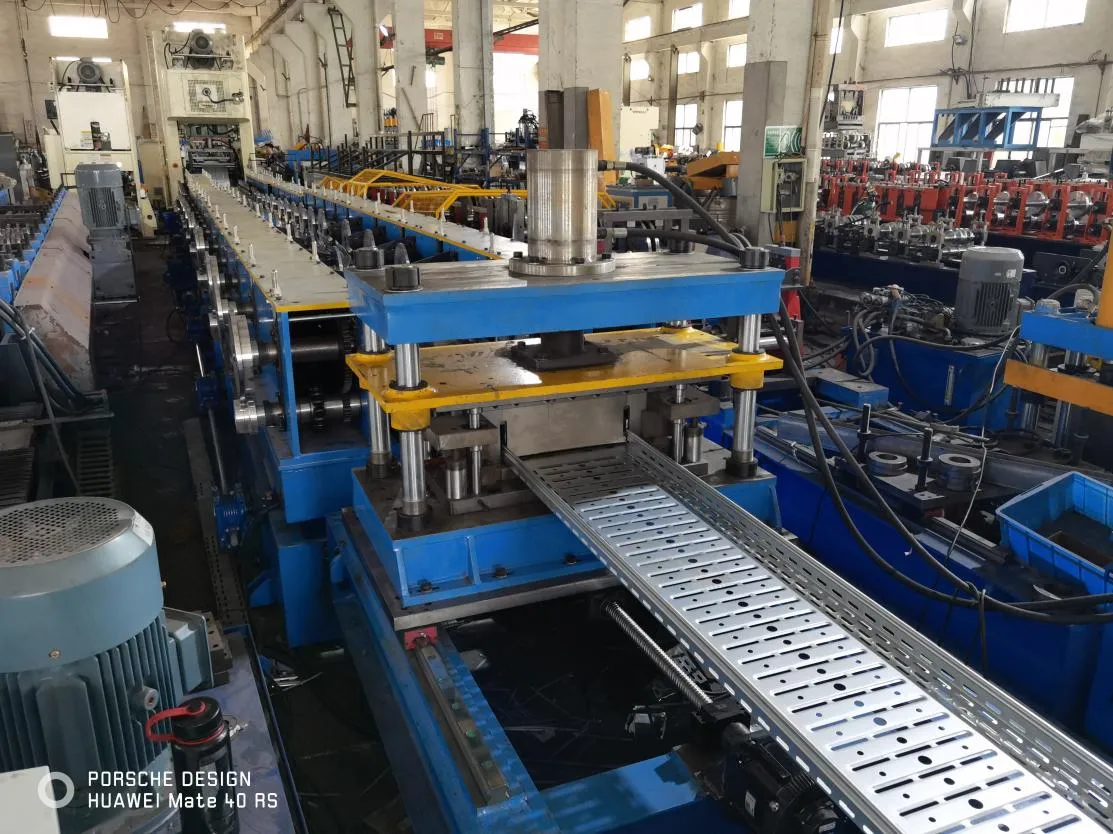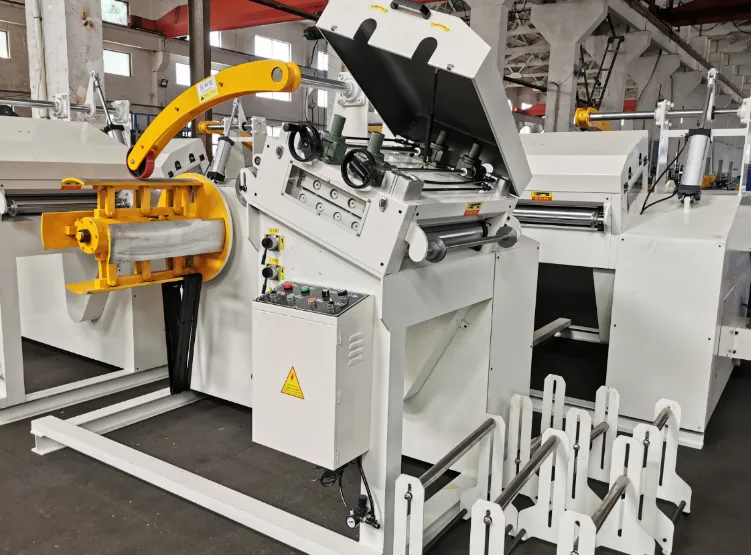Precision Sheet Slitting Machine for Steel & Metal - Fast Cutting
- Introduction to Precision Cutting Technology
- Performance Metrics and Operational Data
- Technical Engineering Advancements
- Manufacturer Comparison Matrix
- Specialized Configurations
- Industry Implementation Cases
- Industry Evolution and Innovation

(sheet slitting machine)
Sheet Slitting Machines Fundamentals
Industrial metal processing requires equipment capable of transforming large material coils into narrower strips with exact specifications. These precision systems form the backbone of production lines across multiple sectors where dimensional accuracy directly correlates with end-product quality. Unlike conventional cutting methods, modern iterations deliver clean edges without deformation or burrs, maintaining material integrity while minimizing waste. When evaluating different configurations, processing speed, blade tolerance levels and adaptive control systems become critical decision factors that impact throughput efficiency and operational economics. Significant engineering focus is directed toward tension management mechanisms that prevent material stretching or compression during high-velocity operations.
Operational Metrics and Impact Assessment
Production data underscores the operational superiority of contemporary systems compared to conventional slitting approaches. Facilities implementing advanced machinery consistently report 23% faster production cycles while achieving material utilization rates exceeding 95%, substantially reducing input costs. Most models operate between 150-400 m/min depending on material thickness, with precision tolerances maintaining ±0.1mm accuracy across continuous 24-hour cycles. Automated features significantly reduce setup durations from hours to under 10 minutes between changeovers, increasing equipment utilization to 85% in automotive manufacturing settings. Performance analytics demonstrate 42% lower energy consumption per ton processed versus older hydraulic models through intelligent power management systems.
Engineering Innovations
Operational advancements originate from several technological improvements that optimize mechanical performance and system intelligence. Tension management has evolved through microprocessor-controlled magnetic brakes that maintain constant web pressure, eliminating variations that previously caused material telescoping and edge defects. Cutting precision benefits from carbide-tooled circular blades mounted on ruggedized mandrels with thermal stability compensation for prolonged high-load operations. Operator interfaces now incorporate process simulation software enabling offline programming that predicts force distribution and prevents machine overload scenarios. Advanced vibration dampening systems reduce harmonic resonance by 67%, extending bearing lifespan while maintaining accuracy thresholds during maximum velocity operation. Remote diagnostics capabilities decreased unplanned downtime by 38% annually through predictive maintenance alerts.
Manufacturer Comparison Matrix
| Manufacturer | Model Series | Max Width (mm) | Max Thickness (mm) | Speed (m/min) | Tolerance | Specialization |
|---|---|---|---|---|---|---|
| Bruderer | SL-900X | 2000 | 6.0 | 480 | ±0.05mm | Stainless alloys |
| EuroBLECH | ProCut V | 2500 | 8.0 | 380 | ±0.08mm | High-volume lines |
| Artech | MasterSlit HD | 1800 | 10.0 | 320 | ±0.1mm | Armor-grade materials |
Specialized Configurations
Custom engineering addresses divergent material characteristics and application-specific processing demands in modern industrial environments. For copper and aluminum electronics components where surface integrity is critical, systems feature integrated micro-lubrication jets that enable clean shearing without particulate transfer onto conductive surfaces. Automotive supply chains require hardened steel processing modules rated for 10+ mm thickness, incorporating dual-servo tension controls preventing material warping at cut initiation points. When processing laminated materials requiring pattern synchronization, optical registration systems coupled with photoelectric guides maintain print alignment within 0.15mm variance throughout production runs. Special blade coating treatments extend tooling longevity 4.5x when cutting corrosion-resistant alloys containing chromium or zinc substrates.
Implementation Cases
Aerospace manufacturing facilities have achieved 32% material savings replacing laser systems with tension-regulated machines processing titanium sheets for engine shielding components. Major appliance producers now maintain constant 18-strip outputs from 2m aluminum coils, improving production rhythm while meeting +0/-0.2mm specifications for dishwasher cavity panels. Transformer core producers processing grain-oriented electrical steel solved lamination stack variance by implementing air-flotation tables that prevent surface abrasion during conveyance. Packaging material converters increased yield by 21% after installing intelligent waste optimization software that dynamically recalculates slit patterns according to incoming coil imperfections. Electronics manufacturers eliminated micro-burrs on copper circuit substrates through precision-ground tooling operating at 1,700 cuts/minute.
Innovation in Steel Sheet Slitting Machine Technology
Development trajectories focus on enhancing intelligent control integration and sustainable operations without compromising throughput requirements. Modular architecture allows manufacturers to upgrade specific subsystems without platform replacement, significantly extending equipment service cycles beyond 15 years. Next-generation control interfaces leverage machine learning algorithms that autonomously adjust parameters based on material feedback sensors, cutting blade wear monitoring, and vibration pattern analysis. Energy reclamation systems entering pilot testing convert rotational inertia into auxiliary power during deceleration phases, potentially reducing net consumption by 18%. Research partnerships in Germany and Japan pioneer contactless laser-calibration methods achieving 0.025mm alignment precision without mechanical adjustments. Future material processing facilities anticipate comprehensive digital twin implementation where slitting parameters undergo virtual validation before deployment. As industries demand increasingly specialized material specifications, these continuous improvements ensure sheet slitting machine
capabilities progress beyond current operational thresholds while maintaining strict processing tolerances.

(sheet slitting machine)
FAQS on sheet slitting machine
Q: What is a sheet slitting machine?
A: A sheet slitting machine is industrial equipment used to cut large coils or rolls of sheet material into narrower widths. It handles materials like metal, plastic, or paper with precision. This process is essential for manufacturing and metal fabrication industries.
Q: How does a steel sheet slitting machine work?
A: The steel sheet slitting machine uncoils a master coil and feeds it through precision circular blades. These rotary knives make parallel longitudinal cuts along the steel's length. Finally, it recoils the slit strips into narrower, customer-specific coils.
Q: What materials can a metal sheet slitting machine process?
A: It processes ferrous and non-ferrous metals like stainless steel, aluminum, copper, and brass. Material thickness typically ranges from ultra-thin foils (0.1mm) to thick plates (6mm). Modern machines accommodate various hardness grades and protective coatings.
Q: What safety features are critical on sheet slitting machines?
A: Essential safety features include blade guards, emergency stop buttons, and light curtains. Modern machines also have automatic jam detection and hydraulic overload protection. Operator safety certifications like CE or OSHA compliance are mandatory.
Q: What factors affect cutting accuracy in metal slitting?
A: Cutting precision depends on blade sharpness, material tension control, and machine rigidity. Advanced CNC systems monitor micron-level tolerances during high-speed operation. Regular calibration and servo-driven positioning systems ensure ±0.005" accuracy.
